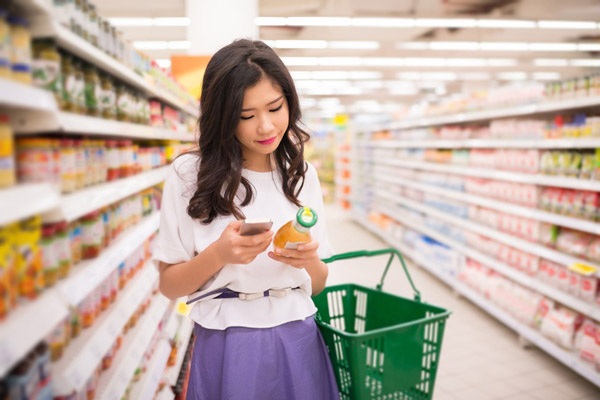

Food Traceability in a Mobile World
The difference between traceability today and traceability 10 years ago is fairly remarkable.
Just think: the iPhone was first released in June of 2007 and is now on its 18th model. The Apple App Store now has over 2 million apps, and Android users can access almost 4 million. We have even created a new form of decentralized digital currencies using Blockchain. Our expectation for what is possible with technology, including visibility into the food supply chain, has been transformed in just over a decade.
The cost of technology, information and data storage have all dropped significantly in the last 10 years. As a result, today, many traceability systems rely on consumer-based mobile devices. Growers, food processors, distributors and retailers can use relatively inexpensive, easy-to-program, cloud-connected devices like Android phones and iPhones to scan barcodes in warehouses, stores, restaurants, and elsewhere. What’s more, software developers can distribute applications worldwide and update them automatically through Google Play or the Apple App Store. All of this has completely changed the total cost of ownership equation for traceability solution providers and customers.
Simultaneously, with the rise in mobile devices, the ubiquity of broadband access and the shift toward the digital consumer, people often think mobile first when they interact with a lot of the big food retailers now. When a customer orders a drink from the Starbucks App, orders a meal kit from Blue Apron, or groceries from Instacart: they are not in a restaurant or store, so there are no food or beverage labels available to them. These companies must collect payment, process the order, and provide the consumer with nutritional and allergen information digitally—marketing, sales, produce R&D, purchasing, accounting, logistics, food safety and quality all integrated into one mobile application.
In all of those cases, printed label information must be collected from suppliers and manufacturing, transferred to mobile application databases, and then sent to consumers digitally. So, if food companies don’t get that digital information correct and in sync, both consumers and companies are at risk.
But there’s more to supply chain visibility than ingredients, nutritional information and allergens. In the not-too-distant future, with advances in traceability technologies, food companies will have the capability to deliver lot-level whole chain traceability data directly to the customer. This could be particularly helpful in alerting consumers about recalls and assisting in foodborne illness investigations.
Consider a recent example: in June 2018, there was an E. coli outbreak associated with Romaine lettuce. The CDC warned people not to consume any Romaine from Yuma, Arizona. The challenge was, labeling rules do not require State—only Country of Origin. However, if you were, say, ordering a sandwich from a restaurant mobile app with integrated traceability information, it could tell you the precise State, County and even Farm of Origin for the lettuce. That level of detail could be the critical difference between someone ordering that sandwich or not ordering a sandwich. Reliable, digital real-time traceability information is important for consumers, especially during a foodborne illness emergency.
Ultimately, traceability is not just about tracking a product externally. It is a good, solid standard business practice for any business. Think, for example, about pharmaceuticals, or medical devices, or automotive parts—really, any modern manufacturing process has either serialization, or batch-lot traceability. Any time a company designs a product, it becomes part of a quality management system. If that company does not sufficiently trace ingredients throughout the production process, how can that company’s quality management team make decisions about making better products? If a grower does not track seed types and lots from planting to harvest, how can they possibly know which performed best? Detailed traceability is really a core practice for delivering a quality end product.
Wherever your company falls in the food supply chain, your traceability efforts are now more important than ever. Knowing this, IFT’s Global Food Traceability Center recently introduced a new online course, Demystifying Traceability, to help companies build an effective food traceability plan. The new, customizable food traceability learning experience will help small to mid-size companies and their supply chains to either evaluate the effectiveness of their existing traceability plans and/or create new ones.
The course is available free of charge, but only for a limited time, so be sure to visit the Demystifying Traceability website and sign up today.
